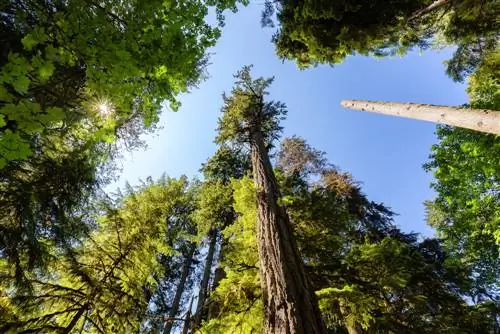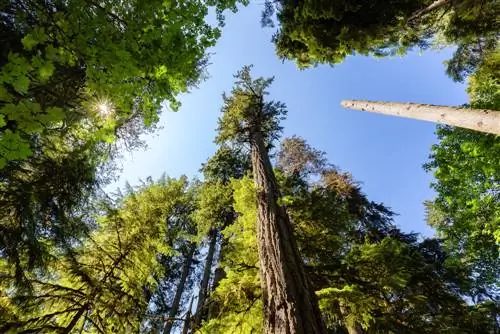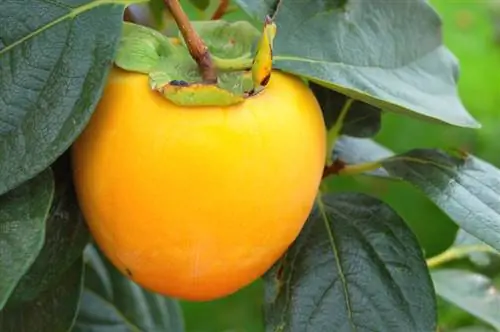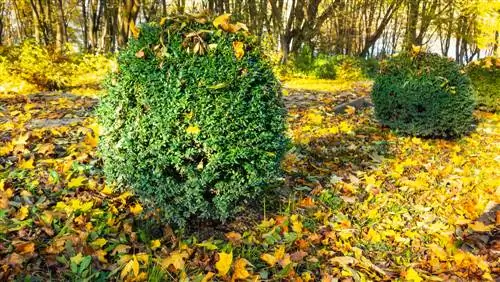- Author admin [email protected].
- Public 2023-12-16 16:46.
- Last modified 2025-01-23 11:22.
Douglas firs (Pseudotsuga menziesii) are among the evergreen conifers that are often cultivated as a replacement for spruces in the wake of climate change and the associated drought. But where are these trees naturally distributed?

Where does Douglas fir originally come from?
The Douglas fir (Pseudotsuga menziesii) is native to western North America, particularly the Rocky Mountains, the Cascade Range of British Columbia and along the Sierra Nevada down to Mexico.
Where does Douglas fir originally come from?
The homeland of the Douglas fir iswestern North America. The largest stocks can be found:
- On the slopes of the Rocky Mountains,
- the Cascade Range of British Columbia,
- along the Sierra Nevada down to Mexico.
Until the last ice age, the ancestors of the Douglas fir, which belongs to the pine family, were also native to European forests. This has been scientifically proven by finds, for example in Upper Lusatia. However, the Douglas fir then died out and is now returning as a climate tree.
Where are the largest stands of Douglas fir in Germany?
The largest stands of Douglas firs can be found inRhineland-Palatinate and Baden-Württemberg. In Germany, this conifer currently takes up around two percent of the total forest area (218,000 hectares).
Since the Douglas fir is a climate-stable tree species that also copes well with drought, it is likely to become more important in terms of forestry in the next few years.
How did Douglas firs come to Europe?
As early as 1827, the Scottish botanist Douglas brought the first specimens of these attractive conifers from America to Europe. He settled them and gave them his name.
Tip
Imposing garden tree for large properties
Douglas fias can grow up to 60 meters high and are therefore well suited as solitary trees for extensive properties. Since they are not poisonous, they can be safely planted where small children play. Once grown, they prove to be very robust and easy to care for.






